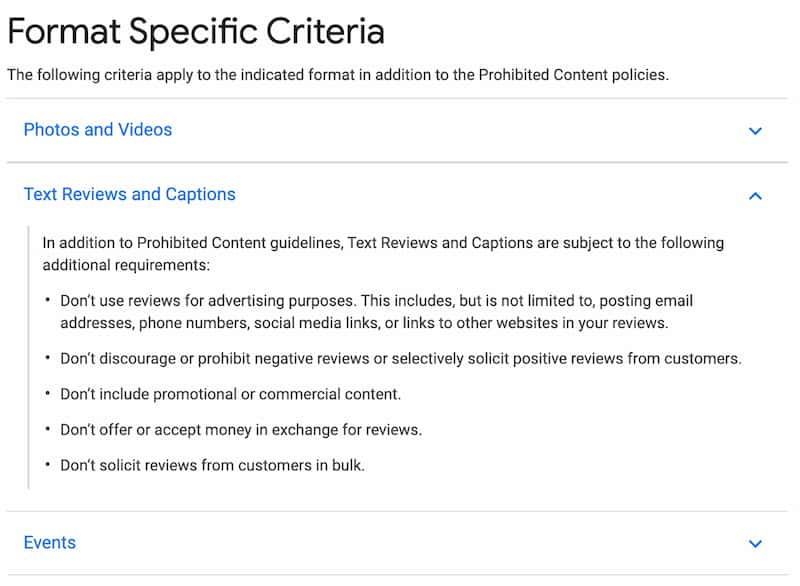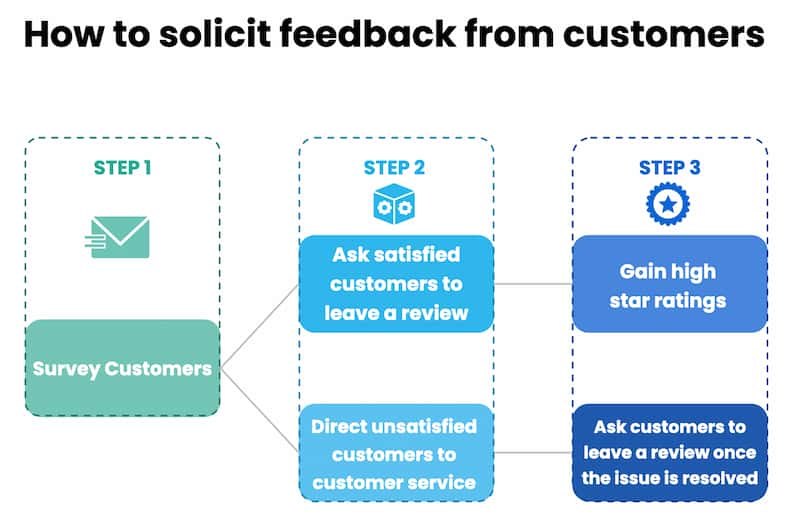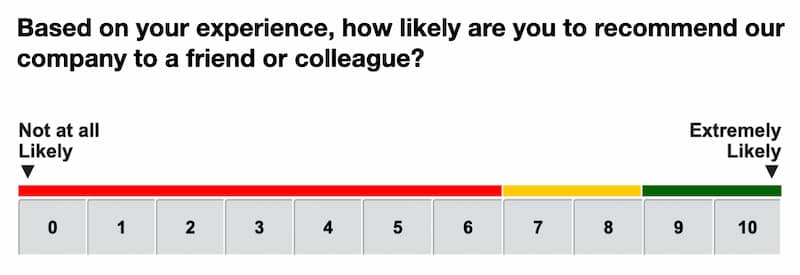What Are Gated Reviews? Are They Good or Bad?
Reviews matter. They make your business more credible and directly impact revenue. No matter if you’re a small business or a major brand, online reviews affect your reputation and conversion rates. They can make or break your business.
This is even more true as we continue to navigate tumultuous economic times. U.S. digital revenue skyrocketed a record-breaking 44.4% between April and June 2020.
Now, more than $1 in every $5 spent on retail purchases comes from online orders. As more people continue to shop online, they’re also reading online reviews to decide where to spend their money.
But online reviews aren’t only relevant in the retail space. People are reading reviews on places like:
- Glassdoor to accept a job offer
- TripAdvisor to plan a vacation
- Better Business Bureau to check a company’s reputation
Taking control of your online reviews can be difficult, and many businesses leave it all up to chance. But given the impact of online reviews on your business revenue, it’s critical to develop a review management strategy.
This article will cover one of the most common review management strategies: review gating.
Sections
What is review gating?
Review gating is the process of asking for customer feedback and directing those with positive feedback to leave a public review. Customers with negative feedback are typically directed to leave internal feedback to the company so they can understand what went wrong without suffering the reputational damage that comes with negative reviews.
Review gating is a common practice in which companies attempt to control their online reputation by keeping negative feedback private while publicizing positive feedback. It can help companies prevent negative reviews by offering negative feedback opportunities to customers who would like to voice their concerns directly with a company representative.
Here are a few examples of review gating:
- Sending an email to someone who recently made a purchase from your company and asking if the person had a positive or negative experience with your company. If it’s positive, they will be directed to leave a positive review.
- Sending a text message asking customers to rate your company and directing those who rate it highly to leave a review.
- Offering discounts or incentives for customers to leave a positive review of your business.
This strategy can help manage issues with customer service and give businesses the opportunity to build better relationships with their customers. It is much better for businesses to review and respond to negative feedback internaly before they become a public online review.
Review gating controversy
While review gating can improve your star rating and gain necessary feedback from both satisfied and unsatisfied customers, some of the major review sites like Google and Yelp have banned the practice.
Google’s TOS says, “Don’t discourage or prohibit negative reviews or selectively solicit positive reviews from customers.”
The main reasoning behind Google’s stance on review gating is that if a business is only asking for positive reviews, then the reviews are not an accurate reflection of the entire customer base’s experience.
While this is a valid point, there is still plenty of value to be gained from internal surveys. In fact, many people prefer to address concerns outside of the public eye. A study by economists John Horton and Joseph Golden found that employers on the freelancer review site Upwork were more likely to leave negative feedback that only Upwork could see.
This bears repeating: Reviewers prefer to leave negative feedback privately.
Opening up a private forum for unhappy customers to voice their opinions can provide valuable feedback that can improve customer service in the long run.
Strategies to gate reviews
At the end of the day, no brand can control everything that is said about them in online reviews. And that’s okay because the occasional negative review is a natural part of doing business. While keeping that in mind, it’s still important to strive for the best star rating you can get.
We’re not recommending that you completely disregard TOS guidelines and implement risky review schemes. But there are several ways to gate online reviews, including:
- Adding a popup that appears after the customer is done using your product or service, asking them if they enjoyed their experience and whether they’d recommend it to a friend.
- Emailing or texting customers a survey to rate their experience with your company. Those who rate their experience highly are routed to a relevant review site. Those with a negative experience are routed to customer service to offer amends for what went wrong.
- Asking satisfied customers face-to-face to leave an online review.
And here’s one simple way to solicit feedback that is compliant with most TOS guidelines.
Step one: Send customers a brief survey asking about their experience. It can be as simple as asking for a star rating (1-5) or if they would recommend your business to a friend.
Step two: Route satisfied customers to a relevant review site to leave a public review. Route unsatisfied customers to an internal form to voice their concerns to customer service.
Step three: After the unsatisfied customer has engaged with customer service, ask them to leave a public review.
This approach allows you to still attempt to solve any route problem issues and convert unhappy customers to happy customers before sending them off to the review sites.
Final thoughts
Review gating is one option to help manage online reviews. Opening up an option for a private forum allows customers to engage with your business in an open dialogue and provide valuable feedback that can improve customer service in the long run.
For some companies, the number of negative public reviews can seem overwhelming and difficult to manage. One way to combat this is to use review gating. A gating strategy can be beneficial for companies who are concerned with how their online reviews may affect their reputation and search rankings.
Need help managing your online reviews? Contact us today.
Review gating FAQs
What is review gating?
Review gating is the process of asking for customer feedback directing those with positive feedback to leave a public review, and directing dissatisfied customers to customer service in order to improve their experience.
Customers with negative feedback are typically directed to leave internal feedback to the company so they can understand what went wrong without suffering the reputational damage that comes with negative reviews.
What are the benefits of review gating?
Review gating can help companies prevent negative reviews by providing feedback opportunities to customers through various touch points. This strategy can help manage issues with customer service and give businesses the opportunity to build better relationships with their customers.
How does a review gating strategy work?
Here’s a simple three-step approach to review gating. Step one: Send customers a brief survey asking about their experience. It can be as simple as asking for a star rating (1-5) or if they would recommend your business to a friend. Step two: Route satisfied customers to a relevant review site to leave a public review. Route unsatisfied customers to an internal form to voice their concerns to customer service. Step three: After the unsatisfied customer has engaged with customer service, ask them to leave a public review.
About the author
Brianne Schaer is a Writer and Editor for Reputation X, an award-winning online reputation management services agency based in California. Brianne has more than seven years of experience creating powerful stories, how-to documentation, SEO articles, and Wikipedia content for brands and individuals. When she’s not battling AI content bots, she is cruising around town in her Karmann Ghia. You can see more of her articles here and here.
–
Tags: Business Reputation Repair, Corporate Reputation, Reputation Marketing, Review Management.



